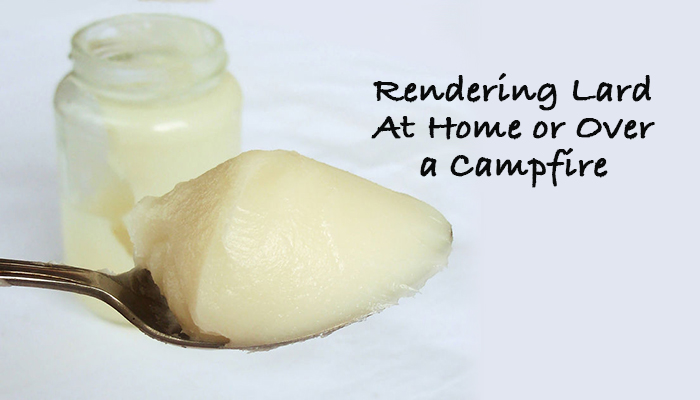
If you typically butcher your own hogs, then you know where the best fat for rendering is located. If you are just getting started, then you may need some advice from the experts. The experts being the farmers who raise hogs for their own consumption, you may be able to buy the fat or the whole hog from a local farmer. Commercially raised hogs tend to be leaner, because that it seems, is what the consumer wants, lean white meat for health, or so they think.
We are not going to get into a discussion on the negative or even the positive health benefits of consuming lard. Lard has been rendered since humans have been eating hogs, so take that for it is worth.
Lard is rendered from the fat of a hog, and not all fat is created equal, however. Leaf lard is considered by most to be the highest grade, because it is the cleanest, and it is highly sought after for cooking and baking. It is especially good for baking because it produces flaky crusts and has no pork flavor. It comes from the soft fat surrounding the kidneys and from the loin of a hog.
The next best thing is fatback and most people are familiar with this fat. It makes excellent lard and is easy to obtain from your local butcher or farmer. Commercially made lard is made from all fats of the hog and often times makers use what is called “caul fat”, which is fat surrounding the digestive organs, and is not considered a high grade of fat by any means. All fat from a hog will render into lard, but you want your lard to be snow white with no odor and you want the highest quality possible for baking, and frying.
Lard has a relatively high smoke point around 375° F (190° C), so it can be used for deep-frying or pan-frying chicken, potatoes and so forth.
Rendering
There are typically two rendering processes, wet, or dry. If you pour off the grease from your bacon pan and use it after it has hardened, then you have rendered lard using the dry method. This is not an ideal method, however, because the lard will have a pork flavor, and it will be darker in color. Dark colored lard with a flavor to it will discolor and add that flavor, which you may not want, to pie crusts, biscuits, and others foods. Additionally, dry rendered lard has a lower smoke point than wet rendered lard.
The wet method is boiling the fat down using water. Lard is insoluble in water, so it can be skimmed off, in other words, it will not mix with the water.
If you can buy fat from your butcher or from a farmer ground up, then do so, because it makes the process easier and faster. If it is not ground up then you have to cut it up before adding to the pot.
Add a 1/2 cup of water to a pot and drop in your cut up or ground up pork fat. A crock-pot is ideal for this. Use low to medium heat. You want the water to evaporate while at the same time separate the fat from the cracklings. The cracklings will settle on the bottom as the fat separates, and it is important you do not let the cracklings burn. Expect it to take about two hours.
Once the fat is melted (clear liquid on top) and the cracklings’ are settled, line a colander with cheesecloth and strain the mixture over a heatproof bowl or pot. The cheesecloth with catch the cracklings and you would probably want to save them. You can put them back in the pot to cook down as you would bacon. They can be eaten as a snack, used in soups or add to salads.
From this point all you need to do is ladle the lard into glass jars (Mason Jars are ideal), or earthen crocks or essentially any heatproof container. Let cool and then refrigerate. You can freeze lard, and it stores well this way for several years.
Some people have stated that their rendered lard is good for 6 or 9 months in the refrigerator and others say longer and still others say not so fast. Much depends on the straining process. The cracklings or bits of pork in the lard can cause it to go rancid faster, so make sure you strain more than once to make sure all of the bits are filtered out.
In years past lard was kept in crocks in the pantry. If rendered properly, lard is shelf stable in our opinion, but you have to decide this on your own. In a grid down situation you will not have refrigeration, so make sure you start learning how to preserve and store foods without refrigeration.
Lard can be canned, as well, and it will last for years on the shelf this way if you are reluctant to simply store the jars on the shelf after straining.